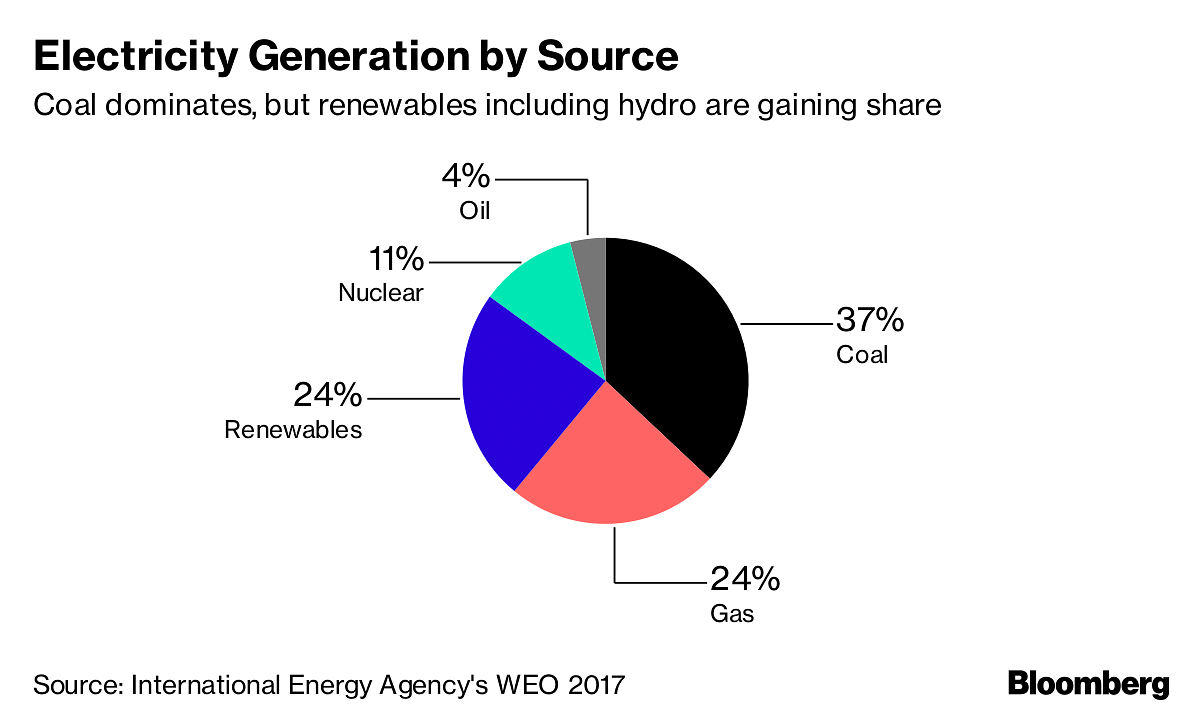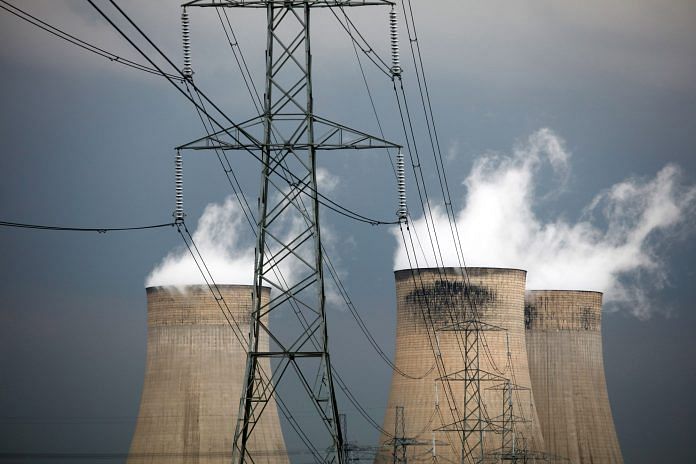To stabilise climate change, the world must invest $2.4 trillion in clean energy every year through 2035 and cut the use of coal-fired power to almost nothing by 2050.
The world must invest $2.4 trillion in clean energy every year through 2035 and cut the use of coal-fired power to almost nothing by 2050 to slow the quickest pace of climate change since the end of the last ice age, according to scientists convened by the United Nations.
The findings released Monday by the UN’s Intergovernmental Panel on Climate Change add pressure on policymakers and businesses to step up their response to global warming, which the scientists said is melting ice caps and making storms more violent. The atmosphere is almost 1 degree Celsius (1.8 Fahrenheit) hotter than it was at the start of the industrial revolution, and burning more fossil fuels will accelerate the shift toward higher temperatures, the group said in its report.
Temperatures are currently on track to rise 3 degrees Celsius by 2100. That’s double the pace targeted under the Paris climate agreements endorsed by almost 200 nations in 2015.
“We are already seeing the consequences of 1 degree of global warming through more extreme weather, rising sea levels and diminishing Arctic sea ice,” said Panmao Zhai, one of the co-chairs who helped bring together the report by the researchers who reviewed thousands of scientific papers.

Envoys at the 2015 Paris talks asked the IPCC to study what it would take to limit warming to 1.5 degrees, a more ambitious goal than the previous 2-degree target. The scientists concluded that carbon dioxide emissions should be cut 45 percent by 2030 from 2010 levels then reduced to zero by 2050. That would require “unprecedented changes in all aspects of society,” most especially within the energy industry. The report acknowledged those changes would be difficult and costly, but not impossible.
“These systems transitions are unprecedented in terms of scale, but not necessarily in terms of speed, and imply deep emissions reductions in all sectors,” the IPCC said in the report. “These options are technically proven at various scales, but their large-scale deployment may be limited by economic, financial, human capacity and institutional constraints.’’
To limit warming to 1.5 degrees would require a roughly fivefold increase in average annual investment in low-carbon energy technologies by 2050, compared with 2015. The $2.4 trillion needed annually through 2035 is also an almost sevenfold increase from the $333.5 billion Bloomberg NEF estimated was invested in renewable energy last year.
The IPCC report also recommended that by 2050: Coal’s share of electricity supply should be cut to 2 percent or less. Renewables should supply 70 percent to 85 percent of power generation. Carbon capture and storage technology should be deployed to absorb remaining fossil-fuel emissions. Natural gas could maintain an 8 percent share of electricity generation if CCS reduced total global net emissions to zero by 2050.
Those ambitions would mark a massive upheaval to the energy system, with coal currently accounting for about 37 percent of power and gas at 24 percent, according to the International Energy Agency.
The IPCC’s proposals are bolder than the most-ambitious scenario set out by the IEA. The Paris-based institution envisioned coal maintaining 6 percent share of the power generation market and gas 16 percent by 2040 under one pathway that’s compatible with 2 degrees of warming.
Organizations and investors that back green energy said the report makes it clear that the world should accelerate the shift away from coal, the most polluting fossil fuel.
“The coal industry has no role in a climate-stable world,” said Jan Erik Saugestad, chief executive officer of Norway’s Storebrand Asset Management, which oversees $88 billion. “It’s our pressing duty to call on other investors to end meaningless engagement with coal-exposed companies.”
The report also highlights the risk to further investments in natural gas-fired power plants and suggests that more of them should be replaced by renewables, said Han Chen, who follows energy finance for the Natural Resources Defense Council.
“Large quantities of current gas plants will need to be retired early, while those under construction or in planning stages must be reconsidered immediately as they are not compatible with the 1.5-degree future,” Chen said.
The World Coal Association noted the IEA and other forecasters expect the fuel to remain an important part of the energy system for the foreseeable future. That would make it crucial to expand carbon capture projects, which siphon the gas off from smokestacks and store it permanently underground.
“Any credible pathway to meeting the 1.5 degree scenario must focus on emissions rather than fuel,” Katie Warrick, interim chief executive officer of the WCA, said after reviewing a draft of the report.
The report was meant to ring alarm bells about global warming, noting that temperatures are likely to be 1.5 degrees higher by 2030 to 2052 based on current commitments to reduce emissions made under the Paris deal. While an increase of that magnitude would boost sea levels by as much as 77 centimeters by the end of the century, that would be about 10 centimeters lower than at 2 degrees, the report said.- Bloomberg



